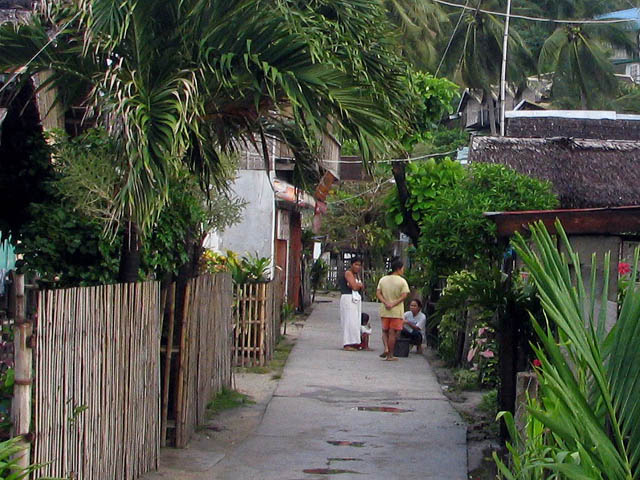
Continuing the village tour, we walked along the concrete-paved "main road" which was less than 2 m wide and restricted to pedestrians only. This made for a very comfortable place to stroll and meet people, unlike downtown Manila where trucks, buses, jeepneys and cars dominate. The side streets were dirt tracks leading to half a dozen houses in a cluster called a purok. Each purok was responsible for maintaining their own area, and had a communal water tap and a covered meeting place.

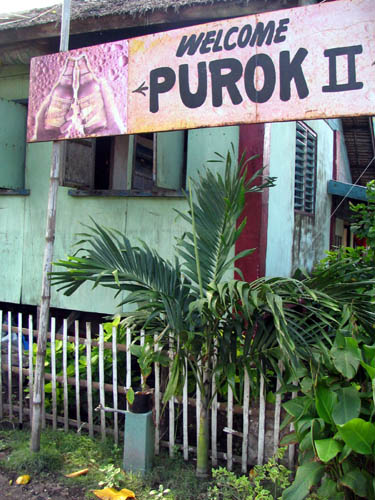 &
&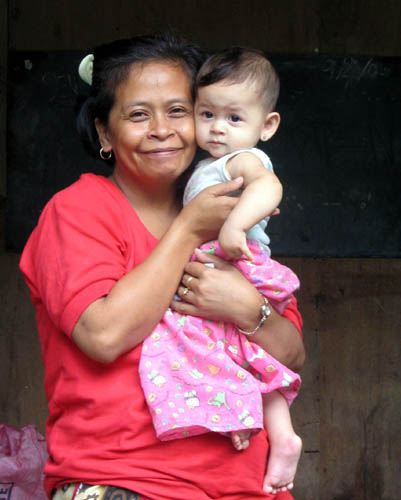
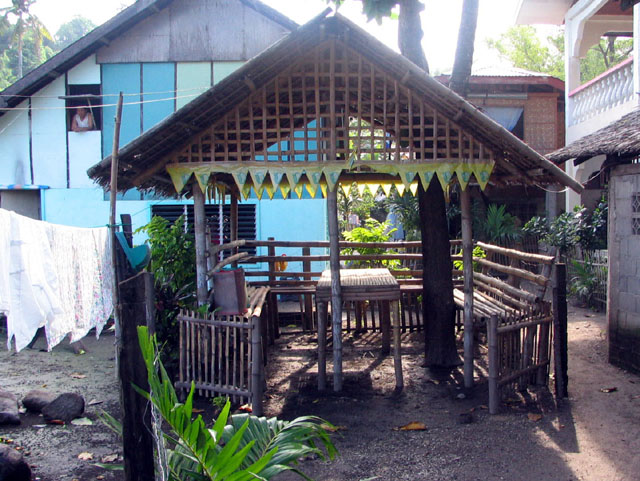
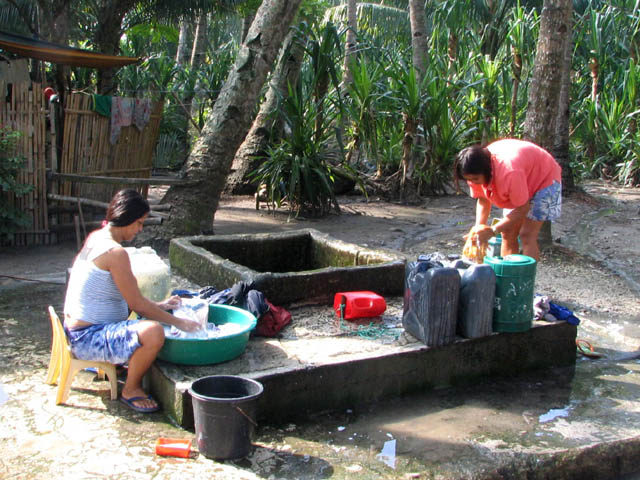
The picture above shows the current situation with the water. There are several communal wells where brackish water is hauled up by hand in pails. Mario told us about some of the improvements the villagers have had over the past few years. Their first priority was an electrical generator, which they now have (although it can only run for a few hours a day because all the fuel has to be brought by boat in jerrycans.) The second priority was a bakery which is now operating. They realized that the bakery might compete with the little stores that were previously selling imported bread, so they intelligently made it a wholesale bakery, which now supplies those same little stores with locally made bread. The third priority was a better source of water. Since the well water is rather salty, they are now installing a reverse osmosis water purifier which will remove the salt and any other residual impurities. It was just being comissioned and we tasted some of its product. The desalinated water was quite nice, rather like a mineral water. Until now, they have been dependent on drinking water in jerricans from the mainland, a supply that any good-sized storm can interrupt. Apparently they need a deeper well yet for a higher flow, before they can reliably purify 7000 litres a day for the 750 inhabitants. Yes, you do the math on that -- Canadians use 200 litres a day each and these people will think they're in heaven if they can get just under 10 each for drinking and cooking.
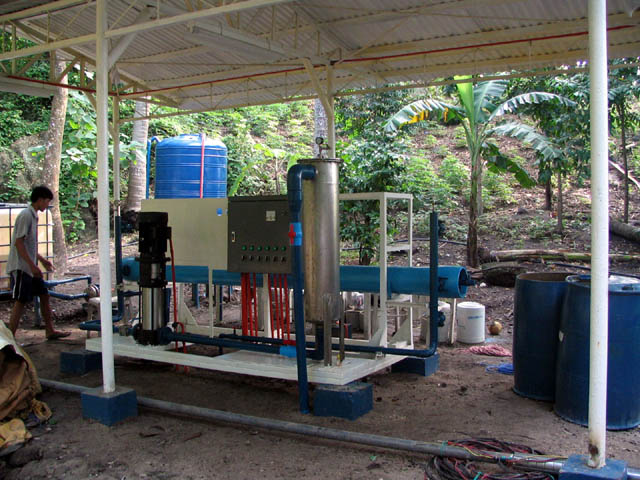
I found all of this to be a really good education in the challenges of a typical rural local government. The citizens can quite readily pay for all this, nobody needs to give them the equipment or buildings, because for example the water and higher education are things they're already paying dearly for on the private market, but it's a question of getting organized and agreeing on the priorities, and of collecting taxes or ingenious user fees (part of our hotel cost was the daily diving fee, for example). We also got quite a lecture on the history of the decision to make Apo Island a marine reserve where things like dynamite fishing are outlawed, but the municipality has to hire guards to enforce that, so citizens had to see clearly that the marine reserve (where baby fish can grow undisturbed) had in its first few years actually increased their fishing catch just outside the reserve before they'd be willing to keep paying the guards. They also have to be convinced that the scuba divers who are attracted by the marine reserve are worth something to them (see Frances, Richard and the rest of the Canucks scramble back to the beach where the vending ladies were waiting, to conscientiously buy souvenir T-shirts and sarongs and keep them happy to host us...).
One of the local forms of entertainment that is apparently very popular and has a big economic impact (because of the betting) is cock fighting. We haven't seen an actual fight yet, but we saw one area of the village where the cocks were being raised, each carefully segregated in its own cage or tied up by one leg. They were magnificent birds and obviously well looked after until their moment of glory (or ignominy).

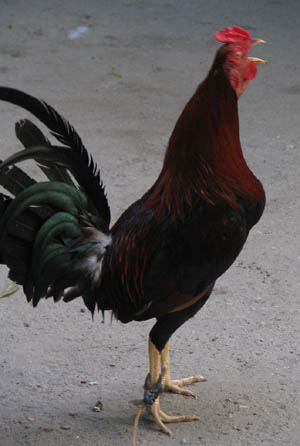
The females were free to roam with their chicks.
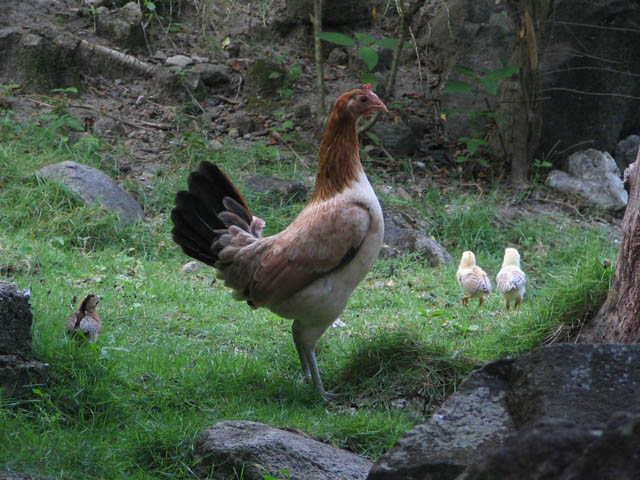
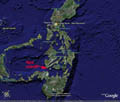 Getting there |
 Scenes |
 Diving |
 Kids & School |
 Village |
 Coconut Wine |
 Lighthouse |
 Sunsets |